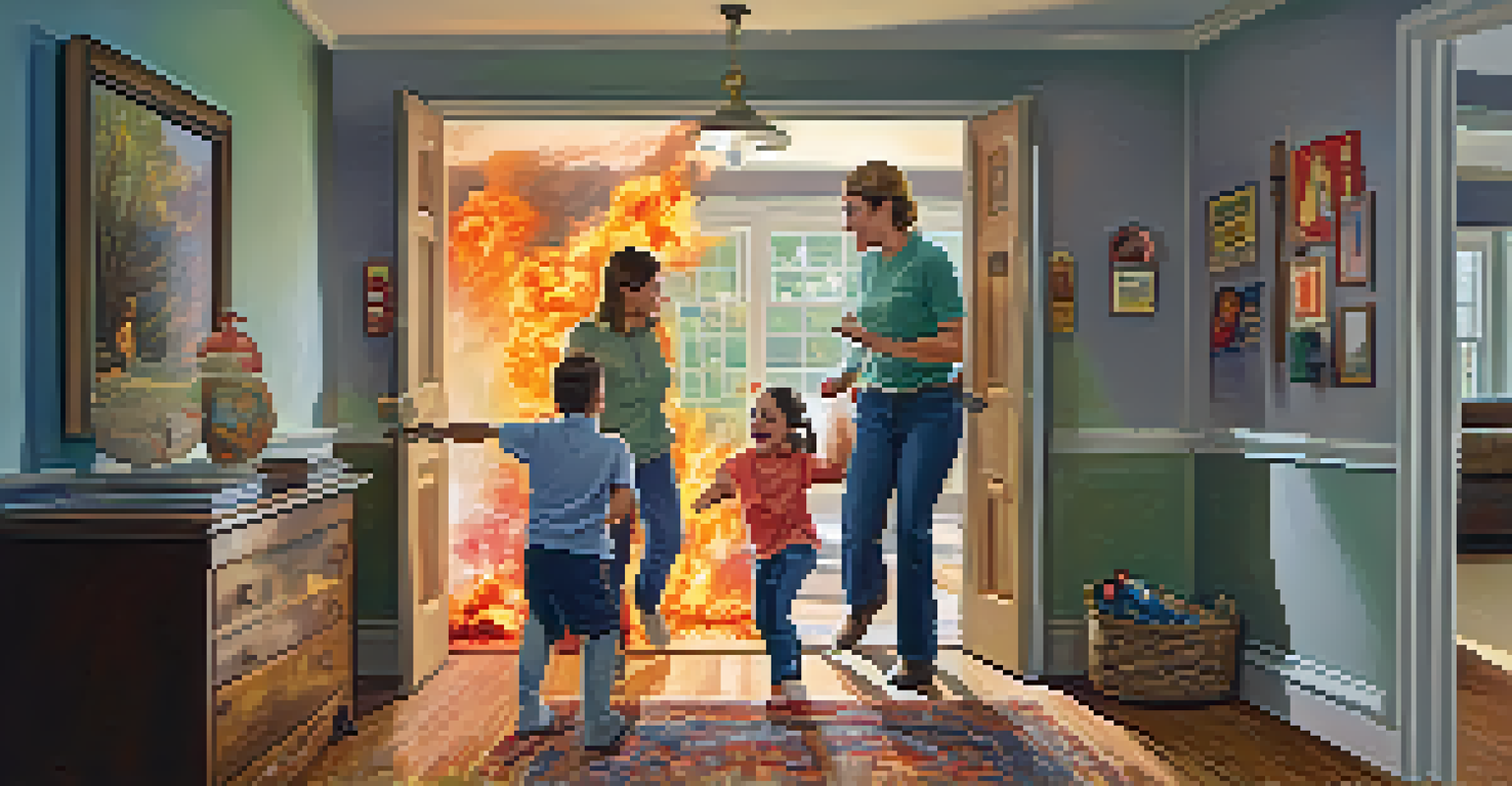How to Educate Your Family About Home Safety

Understanding the Importance of Home Safety
Home safety is more than just keeping your doors locked; it's about creating a secure environment for your family. Understanding the potential hazards in your home can help prevent accidents before they happen. By discussing the importance of safety, you instill a sense of responsibility and awareness in every family member.
Safety isn't just a job for the safety experts; it's a job for everyone.
Think of your home as a fortress. Just as a castle has walls to protect its inhabitants, your home needs rules and practices to keep everyone safe. This foundational understanding sets the stage for more specific safety lessons down the line.
Encouraging open conversations about safety ensures that everyone feels comfortable sharing their concerns. This creates a proactive atmosphere where safety isn’t just a checklist, but a shared family value.
Conducting a Home Safety Assessment Together
A hands-on approach can be incredibly effective for educating your family about home safety. Grab a checklist and walk through your home together, identifying potential hazards in each room. This interactive experience not only makes it engaging but allows family members to contribute their insights.

As you assess your home, take note of areas that could use improvement, such as securing rugs to prevent slips or ensuring that smoke detectors work. This collaborative activity fosters teamwork and encourages everyone to take an active role in maintaining safety.
Prioritize Home Safety Education
Teaching family members about home safety creates a secure environment and fosters a sense of responsibility.
After the assessment, sit down as a family to discuss your findings. Prioritize the issues that need immediate attention and create a plan to tackle them together, reinforcing the idea that safety is a collective responsibility.
Teaching Basic Emergency Procedures
Knowing what to do in an emergency can make all the difference. Take the time to teach your family basic emergency procedures, like how to call 911 or what to do in case of a fire. These skills can empower everyone to act quickly and efficiently when it matters most.
An ounce of prevention is worth a pound of cure.
You might consider role-playing different scenarios to make this learning process more engaging. For instance, practice what to say when calling for help or how to safely evacuate the house. These drills can turn anxiety into confidence.
Additionally, create a family emergency plan that outlines escape routes and meeting points. Having a plan in place gives everyone peace of mind, knowing they’re prepared for unexpected situations.
Creating a Family Safety Kit
A well-stocked safety kit is a must-have for any household. Involve your family in creating a kit that includes essentials like first-aid supplies, flashlights, and emergency contact information. This not only prepares you for emergencies but is also a great educational opportunity.
As you gather items for the kit, discuss the purpose of each item. This helps family members understand their importance and encourages them to know where the kit is stored and how to use its contents if needed.
Conduct Regular Safety Assessments
Engaging the family in hands-on safety assessments helps identify hazards and reinforces teamwork in maintaining safety.
Once your kit is assembled, consider scheduling regular check-ins to ensure everything is up to date. This reinforces the idea that being prepared is an ongoing process, not just a one-time task.
Discussing Fire Safety in the Home
Fire safety is a crucial aspect of home safety that warrants special attention. Start by teaching your family about common fire hazards, like unattended cooking or overloaded electrical outlets. By raising awareness, you can help prevent fires before they start.
Next, discuss the significance of smoke detectors and how often they should be tested. Involving everyone in checking the alarms not only ensures they work but also teaches them the importance of regular maintenance.
Finally, practice a fire drill as a family. Make it a fun event where everyone knows their roles and exits, turning a serious topic into a memorable experience. This proactive approach can save lives.
Promoting Safe Behavior Around the Home
Safety isn't just about preparing for emergencies; it's also about fostering safe habits in daily life. Encourage your family to be mindful of their actions, such as cleaning up spills immediately or storing hazardous materials out of reach. These small practices can make a big difference in preventing accidents.
Set a good example by practicing safe behavior yourself. When family members see you consistently following safety protocols, they are more likely to adopt those habits as well.
Encourage Open Communication
Promoting open discussions about safety concerns ensures that every family member feels comfortable voicing their thoughts.
Consider creating a family safety contract that outlines everyone's responsibilities regarding home safety. This adds an element of accountability and reinforces the importance of keeping your home safe together.
Utilizing Technology for Home Safety
In today's digital age, technology can play a significant role in enhancing home safety. Familiarize your family with smart home devices, such as security cameras or smart locks, that can help monitor your home. Teaching them how to use these tools empowers them to take an active role in safety.
Additionally, explore apps designed to improve safety, such as those that send alerts during emergencies or provide quick access to emergency contacts. These resources can make safety more accessible and manageable.

Encourage family discussions about the pros and cons of technology in safety. This not only helps everyone understand the tools at their disposal but also fosters critical thinking about security in a tech-driven world.
Encouraging Open Communication About Safety
Open communication is key to fostering a safe home environment. Make it a habit to discuss safety concerns, whether it’s about a neighbor's barking dog or a flickering light. This openness ensures that everyone feels comfortable sharing their thoughts and experiences.
Hold regular family meetings to address safety topics and review any new issues that may have arisen. This not only keeps safety at the forefront but also reinforces the idea that everyone’s voice matters.
Finally, celebrate your family’s safety achievements, whether it’s successfully completing a fire drill or maintaining a clean safety kit. Recognizing these efforts strengthens the safety culture in your home, making it a shared value.